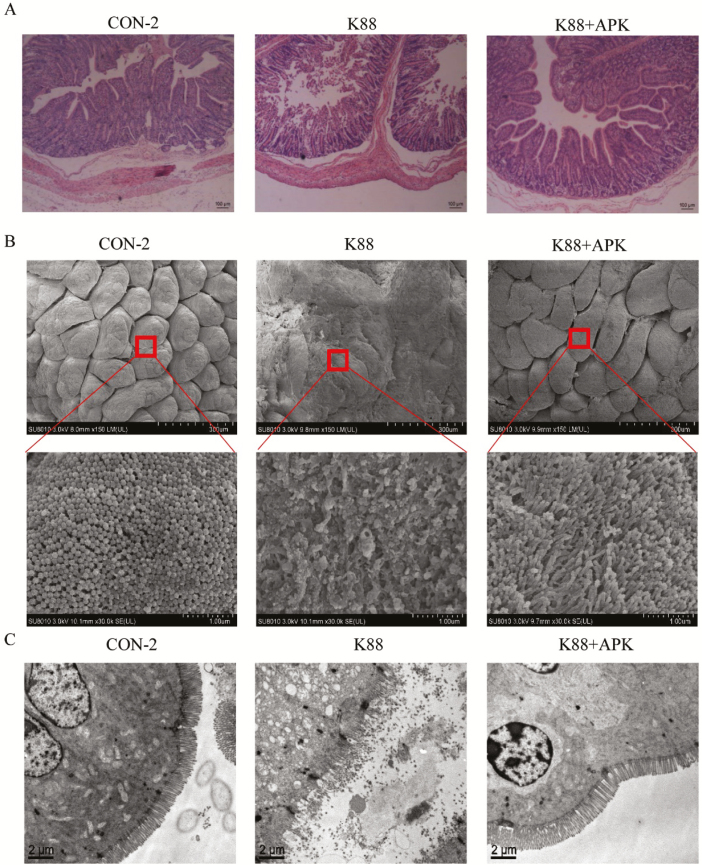Figure 6.
Antimicrobial peptide KR-32 improved intestinal morphology. Jejunum sections were used to analyze intestinal morphology. (A) Jejunum tissue stained with hematoxylin and eosin (bars = 100 µm). (B) Scanning electron microscopy images (upper, 150×; lower, 30,000×) of jejunum tissue. (C) Transmission electron microscopy images (bars = 2 µm) of jejunum tissue. CON-2 = piglets with an oral administration of fresh Luria–Bertani broth (50 mL) followed by an intraperitoneal (i.p.) injection of an equivalent volume of PBS; K88 = piglets orally challenged with 1 × 1010 cfu enterotoxigenic Escherichia coli (ETEC) K88 on day 1 followed by an i.p. injection of an equivalent volume (1 mL) of PBS; K88 + APK = piglets orally challenged with 1 × 1010 cfu ETEC K88 on day 1 followed by an i.p. injection of 0.6 mg/kg KR-32 in Exp. 2. APK = antimicrobial peptide KR-32.

